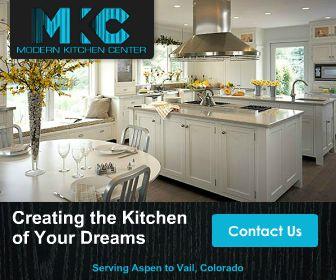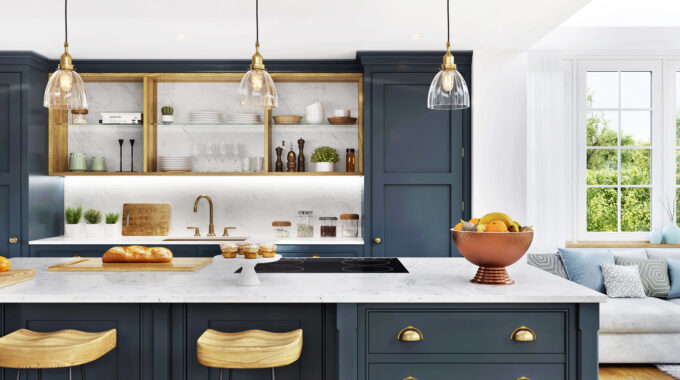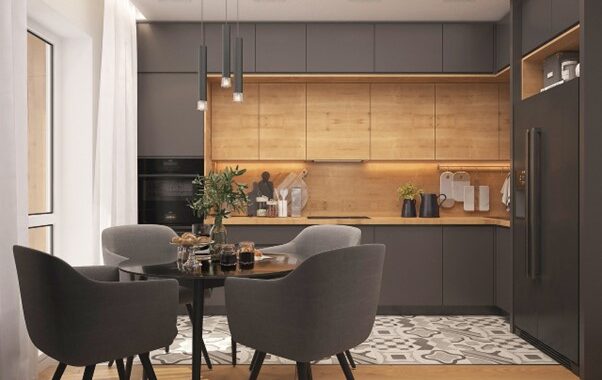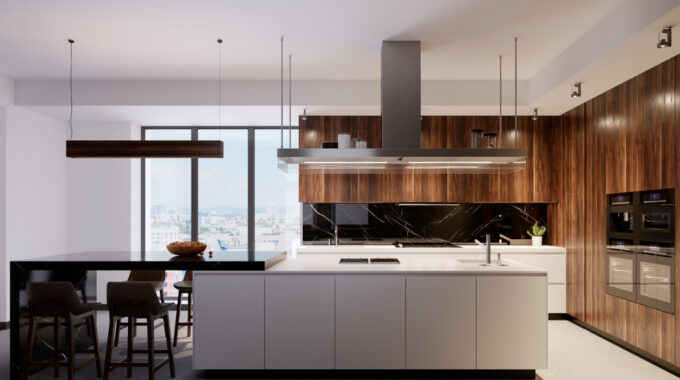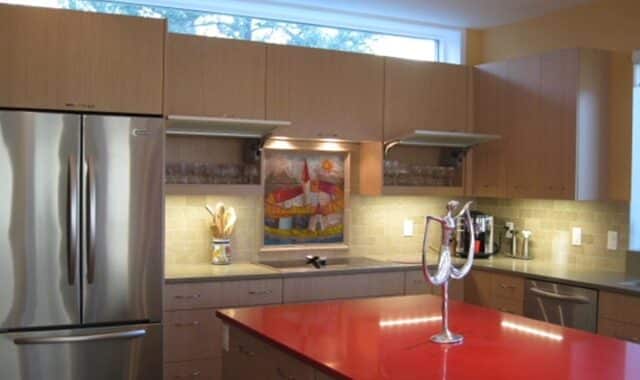
Try These Tips When Designing Your Kitchen Lighting
Kitchen lighting can either make or break the space. Strategically placed can lights, natural lighting from windows or other specific lights, will give your kitchen the warmth and feel of a cozy yet productive area.
It is not only the location of the lighting that affects the appearance of the kitchen, but also the type of bulbs that are in place. Some bulbs give off a yellow hue and florescent bulbs can be harsh on the eyes and not give the most flattering hue to skin color.
Let’s take a look at some kitchen lighting design tips to keep in mind:
Layered Lighting
Old school kitchens featured just one light in the middle of the room, completely ignoring the perimeter and work areas.
The kitchens of today layer lighting, making it more attractive, as well as productive. Mixing and matching different types and bulbs will give the room more dimension.
You want to consider the lighting over any preparation areas, eating areas and accent lighting to give your kitchen a personal touch.
Under Cabinet Lighting
In recent years, lighting under the cabinetry in the kitchen has become very popular. It not only gives the room a stunning appearance, but it is quite useful as well.
When using your counters to prepare meals, sufficient lighting is key. Placing the lights under the cabinets provides ample lighting to slice and chop, without hindering your eyesight and risking cutting yourself.
There are several options of lights that are placed under the cabinet. You can choose from a string of lights, long bulbs or disk shaped lights, which can all be easily installed.
Take Advantage Of Natural Light
There is nothing more beautiful than natural light. It gives the room an inviting, open feeling and makes everyone and everything just look better.
An easy fix to adding more natural light to your kitchen is by changing your window treatments. Opt for blinds that can be easily opened or that let the light filter through.
Skylights are a wonderful way to add natural light without taking up precious wall space. This article has many recommendations for incorporating one into your home. If space and budget allows, additional windows can also be added to brighten up the room.
Accent Lighting
For a more dramatic effect, accent lighting may be the choice for you. This article suggests adding accent lighting inside glass front cabinets to highlight the treasures inside.
Another option is to add a focal point, such as a piece of artwork and illuminate it to draw attention and add interest. This can be done with something as simple as a can light.
Proportionate Lighting
You want to avoid adding lights that are disproportionate to the space you are placing them. For instance, the light over the table should not be too large or small. It should also be hung at an appropriate height.
The general rule of thumb is to hang the light 30-34 inches above the table and it should measure approximately one half to three quarters of the width of your table.
Conclusion
Now that you have some information at your fingertips, you can decide which are the best options for your space. Take some time to evaluate the shape of the room, such as where the windows are located and where you will be placing the appliances and work surfaces.
Speaking with an experienced professional will also be of much help when making lighting decisions. You can discuss your design ideas to develop a plan that will suit your budget as well as your taste.
For further reading about kitchen design, check out: Kitchen Flooring Trends You’ll Love and Biggest Mistakes Renovators Make In The Kitchen.



